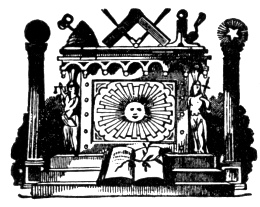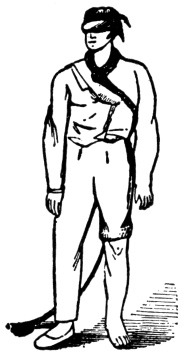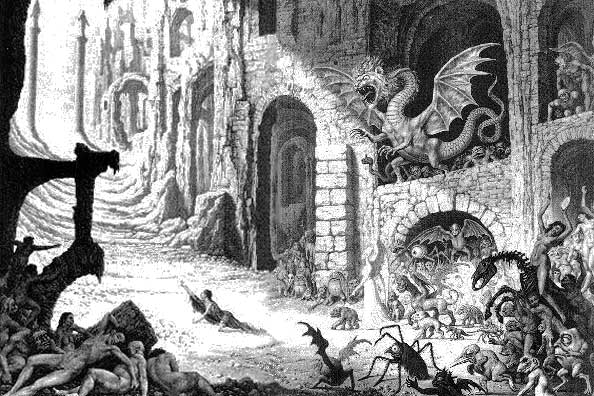34:1 Neither Adam, nor Nimrod, nor Moses, nor Joshua, nor David, not Solomon, nor Hiram, nor St. John the Evangelist, nor St. John the Baptist belonged to the Masonic Order. It is unwise to assert more than we can prove, and to argue against probability. There is no record, sacred or profane, to induce us to believe that these holy and distinguished men were Freemasons, and our traditions do not go back to their days.–Dr Dalcho, G. M. of South Carolina. Historical Landmarks, vol. i, p. 59.
34:2 “HAIL,” or “HALE.”–This word is used among Masons with two very different significations:
(1) When addressed as an inquiry to a visiting brother, it has the same import as that in which it is used, under like circumstances, by mariners. Thus, “Whence do you hail?” that is, “of what Lodge are you a member?” Used in this sense, it comes from the Saxon term of salutation “Hael,” and should be spelled “hail.”
(2.) Its second use is confined to what Masons understand by the “tye,” and in this sense signifies to conceal, being derived from the Saxon word “helan,” to hide.–Lexicon.
35:1 In some Lodges, at the words “throat cut across,” one of the members, or the conductor, draws his hand across candidate’s throat: sometimes they draw the sword.
35:2 A terrible instance of the consequences which attended a violation of this principle has been handed down to us in the story of Hipparchus, a Pythagorean, who, having out of spleen and resentment violated and broke through the several engagements of the society, was held in the utmost detestation, expelled from the school as a most infamous and abandoned Person; and, as he was esteemed dead to the principles of virtue and Philosophy, they had a tomb erected for him, according to their custom, as though he had been naturally dead. The shame and disgrace that justly attended so great a breach of truth and fidelity, drove the unhappy wretch to such despair that he proved his own executioner; and so abhorred was even his memory, that he was denied the rites and ceremonies of burial used to the dead in those times; instead of which, his body was suffered to lie upon the sands of the seashore in the Isle of Samos, to be devoured by rapacious animals.–Theo. Phil., vol. I. pp. 246-7.
35:3 Light is the first demand of a candidate at his initiation; and the material light is succeeded by an intellectual illumination.–Historical Landmarks, vol. i. p. 135.
38:1 The palate and throat being the chief seat of irregular appetites, we are instructed by the first sign to avoid temptation by a proper restraint on our passions; that we may be temperate in all our indulgences, and never exceed the boundary-line of decency and decorum, under the penalty of disobedience, or the violation of those engagements which, as Masons, we have voluntarily assumed.–Theo. Phil., p. 289.
40:1 The Master, assisted by the Senior Warden, lays the chief corner-stone of a beautiful fabric.–Theo. Phil., p. 274.
41:1 The labors are conducted on a plan which is intended to produce an exciting spirit of emulation. Every individual is personally and in turn requested by the Worshipful Master to give his opinion on some specific doctrine or ceremony propounded from the Chair. He may, or he may not, be willing or able to comply with the demand. If the former, he enlightens the members by his disquisition; and if he declines the task, a alight sign is a sufficient negative, and the query is transferred to the next in succession, whose absolute freedom of will is acknowledged by leaving him at full liberty to act as he may feel disposed.–The Freemason’s Treasury, p. 149.
43:1 The Tracing Board combines all the Landmarks of the Degree, and Includes the essence of its lectures and illustrations. It opens with mortality in its feeblest state; poor and penniless, and blind and naked; and conducts the pious inquirer to a glorious immortality.–Historical Landmarks, vol. i. p. 134.
44:1 The candidate is obligated in the east and invested in the west; advances from west to east by right lines and angles, to typify the necessity of an upright life and well-squared actions; and he is subsequently placed in the northeast to receive instruction, as a corner-stone, from which a superstructure is expected to rise, perfect in its parts and honorable to the builder.–The Freemason’s Treasury, p. 24.

Moe is the founder of GnosticWarrior.com. He is a father, husband, author, martial arts black belt, and an expert in Gnosticism, the occult, and esotericism.






